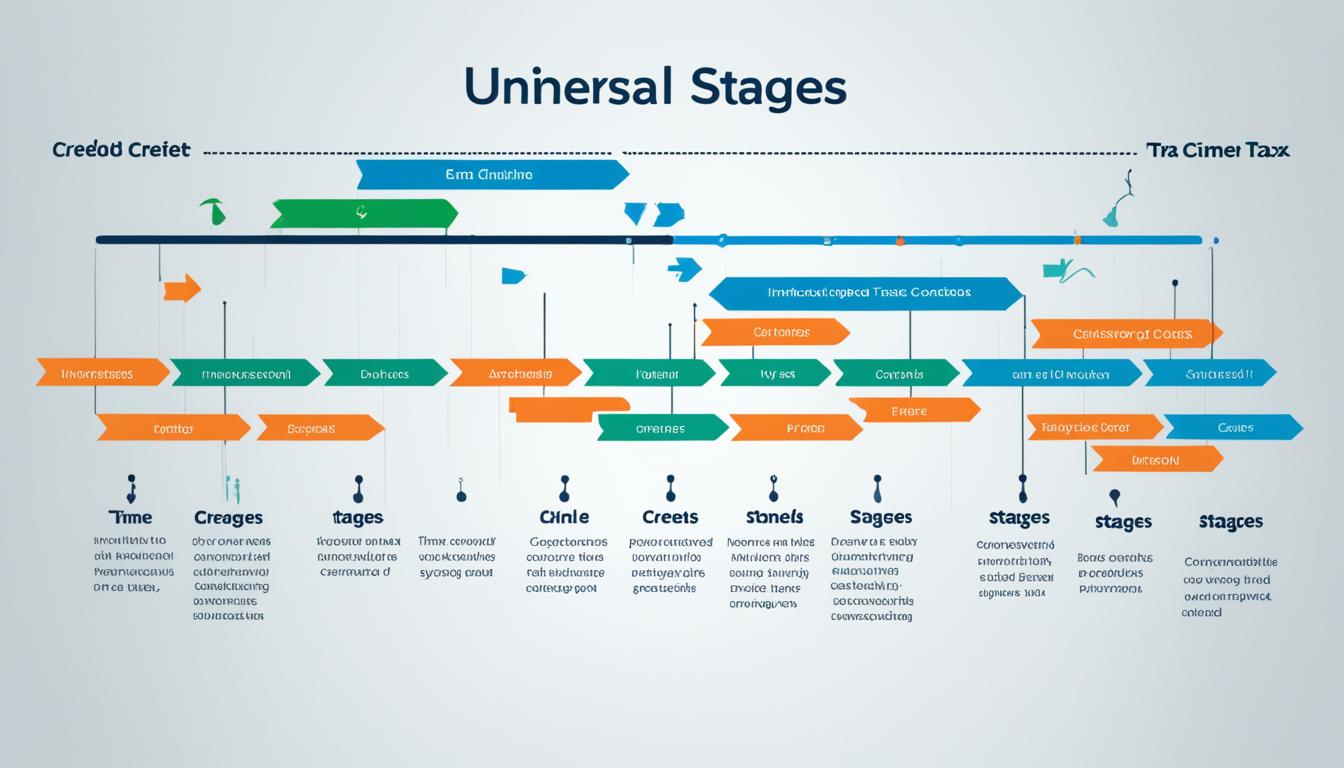Last Updated on: 10th May 2024, 11:18 am
Did you know that the Department for Work & Pensions (DWP) is currently focused on transitioning over 2.1 million households from legacy benefits to the new Universal Credit (UC) system? This significant shift in the UK’s welfare landscape is part of the Government’s plan to simplify the benefits system and ensure everyone receives the support they are entitled to by the end of 2024.
What are Tax Credits?
Tax credits are payments from the government to help people on low or medium incomes. There are two main types of tax credits: Working Tax Credit for employed or self-employed individuals, and Child Tax Credit for those with children.
Understanding Universal Credit
Universal Credit is a single monthly payment that replaces six legacy benefits, including Working Tax Credit, Child Tax Credit, Housing Benefit, Income Support, income-based Jobseeker’s Allowance, and income-related Employment and Support Allowance.
The Need for Transitioning to Universal Credit
The Government is phasing out tax credits and other legacy benefits in favour of the new Universal Credit system. This transition is intended to simplify the benefits system and ensure everyone receives the support they are entitled to, with payments adjusted monthly to reflect changes in circumstances.
Overview of the Move to Universal Credit
Looking for work is not a requirement for tax credits, however tax credits are coming to an end and all claims for tax credits will end on 5 April 2025. If you have been invited by letter to make a claim for Universal Credit by the Department for Work and Pensions (DWP) and fail to do so, your tax credits will stop sooner than 5 April 2025 and you may lose money if you do not make the transition. From 6 April 2025 there will only be the option to claim Universal Credit.

When Will Tax Credits Move to Universal Credit?
The Department for Work & Pensions (DWP) is currently focused on moving the remaining households on legacy benefits, including tax credits, to Universal Credit (UC). They have increased the number of people asked to claim UC who are solely in receipt of Working Tax Credit and/or Child Tax Credit, with a goal of notifying over 500,000 Tax Credit only households by the end of March 2024.
This strategic focus on transitioning Tax Credit recipients to UC is a key part of the Government’s broader effort to phase out legacy benefits and simplify the benefits system. By the end of 2024, the aim is for everyone to be receiving support through the new UC system, with payments adjusted monthly to reflect changes in individual circumstances.
The DWP’s approach involves carefully managing this migration process, learning from their experiences to date, and working to ensure a smooth transition for affected households. This includes closely monitoring why some people are choosing not to claim UC after receiving a Migration Notice, and preparing for the next phase of the Move to UC programme starting in April 2024.

Overall, the DWP’s focus on transitioning tax credit recipients to UC is a critical step in the government’s broader welfare reforms, aimed at simplifying the benefits system and ensuring everyone receives the support they are entitled to. The department’s proactive approach and commitment to learning will be key to delivering this complex but important change successfully.
Reasons for Non-Claim of Universal Credit
The Department for Work & Pensions (DWP) has undertaken research and analysis to understand why some people are choosing not to claim Universal Credit (UC) after receiving a Migration Notice. Some of the key reasons identified include:
- Lack of Understanding – Some individuals may not fully comprehend the changes or how the transition to UC will affect their financial situation, leading to hesitancy in claiming the new benefit.
- Concerns about Payment Timing – The shift to a single monthly payment under UC can cause anxiety for those accustomed to more frequent benefit instalments, particularly if they worry about budgeting for expenses.
- Digital Accessibility Challenges – Some claimants may struggle with the online-focused application process for UC, especially if they lack confidence or access to digital tools.
- Perceived Loss of Entitlements – Individuals may be apprehensive about potentially losing certain benefits or financial support they currently receive through the legacy system.

Understanding these barriers is crucial for the DWP to develop tailored communication and support strategies, ensuring a smooth and successful migration to the Universal Credit system.
Preparing for Wider Legacy Benefit Migrations
As the Department for Work & Pensions (DWP) continues to migrate Tax Credit customers at scale, they are also gearing up for the next phase of the Move to Universal Credit (UC) initiative, set to commence in April 2024. This upcoming phase will focus on transitioning households receiving other combinations of legacy benefits over to the UC system.
In preparation for this wider migration, the DWP has undertaken extensive research and planning to ensure a smooth and efficient process. They have analysed the unique circumstances and requirements of claimants receiving a variety of legacy benefits, such as Housing Benefit, Income Support, and income-based Jobseeker’s Allowance (JSA) or Employment and Support Allowance (ESA).
By thoroughly understanding the nuances of these different benefit types and their interactions, the DWP aims to develop tailored strategies and support mechanisms to facilitate a seamless transition for all affected households. This proactive approach is designed to minimise disruptions to essential financial assistance and ensure that no one is left behind during the migration to the new Universal Credit system.
Eligibility Rules for Universal Credit
As the transition from legacy benefits to Universal Credit (UC) progresses, it’s important for claimants to understand the eligibility rules that may differ from the standard requirements. This process is known as ‘transitional protection’, designed to ensure a seamless migration for those affected by the changes.
One key aspect of the transitional rules is that claimants who were previously receiving tax credits or other legacy benefits may be able to continue receiving the same or a similar level of support, even if their circumstances have changed. This means that some of the normal eligibility criteria for UC, such as income thresholds or work requirements, may be relaxed or adjusted to protect the financial security of those transitioning.
Additionally, the Department for Work and Pensions (DWP) has introduced measures to help ease the transition process. For example, claimants may be able to receive ‘transitional payments’ to bridge the gap between their previous benefits and the new UC payment, ensuring a smooth financial transition.
It’s essential for those affected by the move to UC to stay informed about the latest eligibility rules and to seek guidance from the DWP or trusted advice services. By understanding their rights and the support available, claimants can navigate the transition with greater confidence and ensure they continue to receive the benefits they are entitled to.

Understanding Universal Credit Payments
Universal Credit (UC) payments are designed to provide a comprehensive financial support system for individuals and households. The monthly UC payment is composed of a standard allowance, as well as any additional amounts that may apply based on specific circumstances, such as having children, a disability, or housing costs.
The standard allowance for UC serves as the basic payment, and it varies depending on the claimant’s age and relationship status. For example, single claimants aged 25 or over receive a standard allowance of £334.91 per month, while couples where both partners are 25 or over receive £525.72 per month.
In addition to the standard allowance, UC can include extra amounts to cover specific needs. These may include:
- Child element: Additional payments for each child in the household, with higher rates for the first child and lower rates for subsequent children.
- Disability element: Extra support for claimants with a disability or health condition that affects their ability to work.
- Housing costs element: Assistance with rent or mortgage payments, helping to ensure claimants can maintain their housing.
The total UC payment is then adjusted monthly to reflect any changes in the claimant’s circumstances, such as changes in income, employment status, or family composition. This ensures the support provided remains tailored to the individual’s or household’s needs, promoting financial stability and meeting the evolving requirements of the claimant.
| UC Element | Monthly Amount |
|---|---|
| Standard Allowance (Single, 25+) | £334.91 |
| Standard Allowance (Couple, 25+) | £525.72 |
| Child Element (First Child) | £290.00 |
| Child Element (Subsequent Children) | £244.58 |
| Disability Element (Limited Capability for Work) | £354.28 |
| Housing Costs Element (Average Rent) | £600.00 |
The Claiming Process for Universal Credit
To continue receiving financial support, claimants must claim Universal Credit (UC) by the deadline date given in their Migration Notice letter, which is 3 months from the date the letter was sent. This process involves several key steps:
- Accessing the Claim – Claimants can access the UC claim form through the Government’s online portal or by calling the UC helpline.
- Providing Personal Details – Claimants will need to provide information such as their National Insurance number, employment and income details, housing costs, and details of any children or disabilities.
- Verifying Identity – Claimants will be required to verify their identity using approved methods, such as uploading identification documents or attending an interview.
- Attending a Claimant Commitment Interview – Claimants will need to attend an interview with a work coach to discuss their circumstances and agree on a Claimant Commitment, which outlines their responsibilities for receiving UC.
- Receiving the First Payment – Once the claim has been processed, claimants will receive their first UC payment, which is normally paid monthly in arrears.
It’s important for claimants to ensure they complete the UC claim process within the 3-month deadline specified in their Migration Notice letter to avoid any disruption to their financial support.
Conclusion
The British Government’s phaseout of tax credits and transition to the Universal Credit system by the end of 2024 marks a significant shift in the country’s benefits landscape. This strategic move aims to simplify the benefits system and ensure that every individual receives the support they are rightfully entitled to, with payments dynamically adjusted on a monthly basis to reflect changes in their circumstances.
As the migration process continues, it is crucial for affected households to stay informed and engage with the Department for Work and Pensions (DWP) to navigate the transition successfully. By understanding the eligibility criteria, claiming process, and payment structure of Universal Credit, claimants can make informed decisions and secure the financial assistance they need during this period of reform.
Though the transition may pose challenges for some, the Government’s commitment to streamlining the benefits system and delivering tailored support to those in need is a positive step towards a more efficient and equitable welfare system in the United Kingdom. As the rollout of Universal Credit progresses, it will be crucial for policymakers, service providers, and the public to work collaboratively to ensure a smooth and inclusive transition for all affected individuals.
FAQ
1. What are Tax Credits?
Tax credits are payments from the government to help people on low or medium incomes. There are two main types of tax credits: Working Tax Credit for those who are employed or self employed, and Child Tax Credit for people with children.
2. What is Universal Credit?
Universal Credit (UC) is a single monthly payment that replaces 6 legacy benefits: Working Tax Credit, Child Tax Credit, Housing Benefit, Income Support, income-based Jobseeker’s Allowance (JSA), and income-related Employment and Support Allowance (ESA).
3. Why is the Government transitioning to Universal Credit?
The Government is phasing out tax credits and other legacy benefits, and transitioning everyone to the new Universal Credit system by the end of 2024. This is to simplify the benefits system and ensure everyone receives the support they are entitled to, with payments adjusted monthly to reflect changes in circumstances.
4. When will Tax Credits move to Universal Credit?
The Government is currently focused on moving the remaining households on legacy benefits, including tax credits, to Universal Credit (UC). They have increased the number of people asked to claim UC who are solely in receipt of Working Tax Credit and/or Child Tax Credit, with a goal of notifying over 500,000 Tax Credit only households by the end of March 2024.
5. Why are some people choosing not to claim Universal Credit?
The Department for Work & Pensions (DWP) has undertaken research and analysis to understand why some people are choosing not to claim Universal Credit (UC) after receiving a Migration Notice. Some of the key reasons identified include.
6. What is the next phase of the Move to Universal Credit?
While the Department for Work & Pensions (DWP) continues to migrate Tax Credit customers at scale, they are also preparing for the next phase of Move to UC due to start in April 2024. This will start to move households in receipt of other combinations of legacy benefits to UC.
7. How are the eligibility rules different for Universal Credit?
As benefits are ending and claimants need to move to Universal Credit (UC), some of the normal eligibility rules for claiming are different. This is known as ‘transitional protection’.
8. How are Universal Credit payments calculated?
Universal Credit (UC) payments are made up of a standard allowance and any extra amounts that apply, such as for children, disabilities, or housing costs.




















No Comments
Leave a comment Cancel